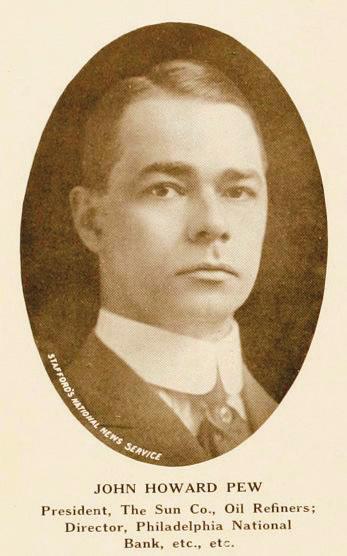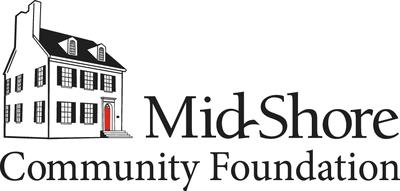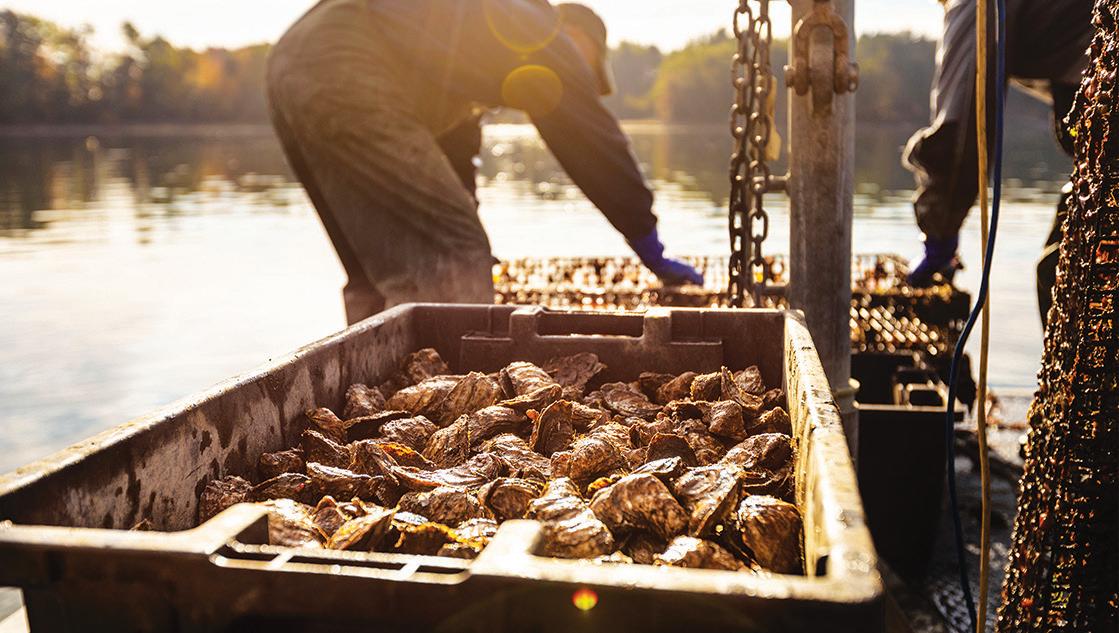
7 minute read
Oxford Map and History
Oxford is one of the oldest towns in Maryland. Although already settled for perOxford haps 20 years, Oxford The Strand Tilghman St. Market St. High St. East St. Division St. Oxford Road Benoni Ave. Pleasant St. Robes Hbr. Ct. South Morris Street Bachelor Point Road Pier St. E. Pier St. Bonfield Ave.Third StreetJack’s Pt. Rd.First Street 2nd St. W. Division St. Caroline St.West St. Tred Avon Ave. Myrtle Ave. Sinclair St. Richardson St.South Street Town Creek Rd. Wilson St. Stewart Ave. Norton St. Mill St. Jefferson St. Banks St.Factory St.Morris St. Oxford Community Center Oxford Park Bellevue Ferry T r e d A v o n R i v e r Town Creek Oxford To Easton 333 8 1 2 3 7 9 10 11 13 15 16 17 18 19 4 56 12 14 © John Norton marks the year 1683 as its official founding, for in that year Oxford was first named by the Maryland General Assembly as a seaport and was laid out as a town. In 1694, Oxford and a new town called Anne Arundel (now Annapolis) were selected the only ports of entry for the entire Maryland province. Until the American Revolution, Oxford enjoyed prominence as an international shipping center surrounded by wealthy tobacco plantations. Today, Oxford is a charming tree-lined and waterbound village with a population of just over 700 and is still important in boat building and yachting. It has a protected harbor for watermen who harvest oysters, crabs, clams and fish, and for sailors from all over the Bay.
For a walking tour and more history visit https://tidewatertimes. com/travel-tourism/oxford-maryland/.
encourage oystermen to venture into aquaculture. When COVID-19 struck, these efforts were supplemented by a new coalition funded largely on profits from Big Oil.
In October 2020, Pew Charitable Trusts threw a sorely needed lifeline to oyster farmers: trickle-down economics reaching to the depths of Chesapeake Bay. Pew Charitable Trusts was instrumental in establishing an initiative dubbed Supporting Oyster Aquaculture and Restoration (SOAR), which unites The Nature Conservancy (TNC), U. S. National Oceanic and Atmospheric Administration (NOAA), U S. Department of Agriculture (USDA) and local agencies such as the Department of Natural Resources (DNR) and Oyster Recovery Partnership (ORP) in Maryland and several other coastal states.
The ultra-conservative pair of brothers who established the Pew trusts surely would have been averse to joining hands with such an alphabet soup of acronyms. The Philadelphia office of the trusts’ late, longtime chairman, J. Howard Pew, displayed portraits of two Americans he most admired: Pres-
202 Morris St., Oxford 410-226-0010
BOOKSELLERS We’re All a Little Bit Irish
We love our customers! Shop Small
31 Years in Business We Know Books!
*Listen Fri. mornings on WCEI 96.7fm *20% off your book clubs’ books *Books of all kinds & Gifts for Book Lovers *Special orders & Book Gift Baskets *Online ordering & e-newsletter @ www. mysterlovescompany.com


Serving Caroline, Dorchester, Kent, Queen Anne's & Talbot Counties
The Mid-Shore Community Foundation connects private resources with public needs in order to enhance the quality of life throughout the Mid-Shore Region.
We provide tools that enable donors to easily and effectively support the causes they care about - immediately or via bequest. 102 East Dover Street Easton, Maryland 21601 410-820-8175 www.mscf.org
ident Herbert C. Hoover and Reverend Billy Graham. Howard and his younger brother, Joseph Pew, Jr., had joined their father, Joseph, in the Sun Oil Company in the late 1800s. When John D. Rockefeller elbowed the senior Joseph out of oil-drilling in his native Pennsylvania, the dispossessed oilman looked westward, just in time to partake of the “Texas Tea” gushing from the Spindletop strike in Southeast Texas.
Joseph’s two sons, Howard and Joseph, were forerunners of better-known ultra-conservative sibling duos flush with Texas oil money: the Hunts, who cornered the silver market in 1980, and, more recently, the renowned Koch
Fresh Muffins Daily Homemade Soups Sandwiches & Salads Frozen Meats · Groceries Breads · Cold Cuts Beer · Wine · Liquor
410-226-0015 203 S. Morris St., Oxford
Oysters SOAR since become more active and diversified. Under the SOAR probrothers. In their day, though, gram, trust administrators hope to the publicity-shy Pews managed augment the income of 100 oyster to avoid the national limelight. growers in several states. The goal The Pew charitable foundations is to maintain viable oyster farmdonated to conservative politi- ing and relieve the current crisis by cians and religious causes, but at a salvaging unmarketable but envirather parsimonious rate. Perhaps ronmentally valuable oysters. a dearth of acceptable donees low- Oystermen are, of necessity, acered the percentage of funds dis- climated to the fluctuations Mothpensed from the millions swelling er Nature causes in their catch and the tax-saving trusts. It took an act income. The health of stationary of Congress in 1969 to loosen the oyster ground waxes and wanes purse strings of Pew Charitable in reaction to seasonal variations Trusts. in the weather, especially salinity
Luckily for struggling Chesa- levels rising and falling from hurripeake oyster farmers worried canes or droughts. To such drastic about getting through the current extremes are added ever-shifting year, the Pews’ legacy trusts have tweaking of government regula-

Open Friday dinner, Saturday breakfast, lunch & dinner and Sunday brunch & dinner Deliciousness ToGo and delivered Friday through Sunday inclusive Ordering from our main menu and our new “Winter Comfort ToGo” THE ROBERT MORRIS INN 1710 OXFORD MD
314 NORTH MORRIS STREET ٠ OXFORD ٠ 410 226 5111 WWW.ROBERTMORRISINN.COM 106
tions. But no fluctuation compares to the halt from restaurant closures toward the end of the 2020 oyster season.
Earlier in 2020, one typical dealer at the Jessup Wholesale Seafood Center saw his daily truckloads of sales to restaurants, hotels and caterers decline from thirty trips to seven. Wholesalers were forced to drastically reduce seafood purchases. When restricted reopening became permissible now and then in the summer, restaurants struggled to find ways to survive with limited indoor service, outdoor dining or carryout. Through the summer and into fall and winter, oyster farmers coped with the ebb and flow of sales in support of restaurants’ adjustments and readjustments. Also, most growers made efforts at direct sales, with mixed results.
Meanwhile, out on the farms, cultured oysters continue to grow. Without adequate markets, many oysters reach an undesirable size, not suitable for such half-shell demand as survives. The preferred presentation of half-shells is an iced array composed of similar, well-formed 3-inch oysters. If overgrown in crowded conditions, the product’s value declines or disappears altogether.
SOAR sponsors the purchase of oversize and surplus farmraised oysters for transplantation to existing reefs, with an aim to
Tidewater Residential Designs since 1989
TIMOTHY B. KEARNS

TBKEARNSDESIGN.COM · 410.226.5100
spur future, post-virus productivity while improving water quality. The program hopes to transplant more than 5 million adult oysters in seven states: Maryland, New Jersey, New York, Massachusetts, New Hampshire, Maine and Washington. A fund of $2 million will be dedicated to purchases over a two-year period. An additional $1 million will establish the Shellfish Growers Resilience Fund to “address some of the underlying challenges growers face.”
The SOAR initiative provides growers a new outlet, one that benefits the environment while affording aquaculturists some relief. Pew Charitable Trusts’ stated aim: “Adding large, healthy adult oysters through the SOAR initiative could rapidly accelerate progress on the restoration programs.” They also wish that, as a by-product, the program might seed more cooperation between private and public industry, government and environmental agencies.




In Maryland, transplanting will be restricted to oyster sanctuaries previously established by the state as off-limits for harvesting. From the growing number of areas thus forbidden to individual watermen, three were selected to be augmented with SOAR oysters: sanctuaries in the Nanticoke and St. Mary’s rivers, and the Mill Hill sanctuary south of Kent Island. These sites were chosen by The Nature Conservancy and the Department of Natural Resources for having firm substrate suitable for planting, and fertile environments for reproduction.
While these efforts are ongoing in coastal waters from Maine to Washington State, seafood lovers sheltering at home can enjoy numerous online videos of How to Shuck an Oyster, some more professional than others. Of recipes available, Oysters Rockefeller remains popular, though these were likely banned from Joseph Pew’s table. As Forrest Gump might say, one can also find oysters raw, smoked, broiled, stewed, single fried, frittered (in Dorchester County, flittered), po’ boys, pot pied, mignonette and so forth.
pied, mignonette and so forth.
Forty-some years ago, A.M. Foley swapped the Washington, D.C., business scene for a writing life on Elliott Island, Maryland. Tidewater Times has kindly published portions of one upcoming work, Chesapeake Bay Island Hopping, along with other regional musings. Foley’s published works are described at www.HollandIslandBook.com.













